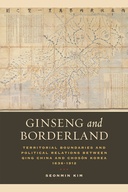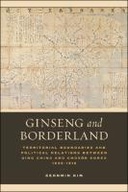Explore

Ginseng and Borderland explores the territorial boundaries and political relations between Qing China and Chosŏn Korea during the period from the early seventeenth to the late nineteenth centuries. By examining a unique body of materials written in Chinese, Manchu, and Korean, and building on recent studies in New Qing History, Seonmin Kim adds new perspectives to current understandings of the remarkable transformation of the Manchu Qing dynasty (1636–1912) from a tribal state to a universal empire. This book discusses early Manchu history and explores the Qing Empire’s policy of controlling Manchuria and Chosŏn Korea. Kim also contributes to the Korean history of the Chosŏn dynasty (1392–1910) by challenging conventional accounts that embrace a China-centered interpretation of the tributary relationship between the two polities, stressing instead the agency of Chosŏn Korea in the formation of the Qing Empire. This study demonstrates how Koreans interpreted and employed this relationship in order to preserve the boundary—and peace—with the suzerain power. By focusing on the historical significance of the China-Korea boundary, this book defines the nature of the Qing Empire through the dynamics of contacts and conflicts under both the cultural and material frameworks of its tributary relationship with Chosŏn Korea.
“Makes a very important contribution to our knowledge of the conceptions of territory and foreign relations of both the Qing dynasty and Chosŏn Korea.” PETER C. PERDUE, Yale University
“This well-researched study shows the surprising power of weaker actors over the strong and will be of value to historians interested in frontiers, territoriality, and migration.” MARK ELLIOTT, Professor of Chinese and Inner Asian History, Harvard University
SEONMIN KIM is Associate Professor at the Research Institute of Korean Studies at Korea University.
This book is included in DOAB.
Why read this book? Have your say.
You must be logged in to comment.

